Like some other plants with famous relatives Mugwort gets lost in the negative publicity.
Mugwort, Artemisia vulgaris, is completely over shadowed by Artemisia absinthium, the original narcotic ingredient in the liquor Absinthe. I have had the liquorice-like real Absinthe several times in Greece and I have no idea how 1) anyone could like it let alone 2) become addicted to it. It reminds me of extremely bad sweet Ouzo. That bring me to a bit of history.
Decades ago I studied cooking with a retired chef who claimed to have taught Chef Boyardee, Ettore Boiardi 1897 – 1985, the finer art of cooking. (Green Deane has the credentials to cook on ships.) This chef liked the original Oysters Rockefeller which was made with then-banned in the U.S. and still-banned original Absinthe. In his retirement community there was a retired chemist. So these two very old fellows helped each other out. The chemist distilled the Wormwood to add to the sanitized Absinthe and the chef made the original Oysters Rockefeller for them. I often wondered what the headline would have been if they had been arrested for making the illegal dish. Some 40 years later I still use that chef’s (legal) recipe to make Strawberries Romanoff at Christmas. Incidentally the word “Absinthe” comes from the Greek word apsinthion which can mean “undrinkable” a description I totally agree with.
While Mugwort is not as powerful as its genus sibling it has its own chemical calling card: Cinceole, or wormwood oil, thujone, flavonoids, triterpenes and everyone’s favorite rat killer Warfarin aka courmarin also known in medical circles as coumadin. Despite all that the leaves and buds are used as a flavoring or a potherb. There is also an edible cultivar called the White Wormwood or Ghost Plant. It has a floral taste similar to chrysanthemums and is used in soups or fried as a side dish.
A native of Eurasia Mugwort is found in most of North America except the desert southwest and northern plains states. Artemisia vulgaris is said ar-tah-MIZ-ee-ah vole-GAR-us. Vulgaris means common. Artemisia is Dead Latin’s version of a Greek name for wormwood after the goddess Artemis for whom it was sacred. Artemis’ Roman equivalent is Diana. She was the twin sister of Apollo, a goddess of transitions, a hunter, a virgin, and one of the goddesses who assists at childbirth. She also got really irritated with the love affair between Krokus, a human, and Smilax, a wood nymph. Such things were frowned upon. But even in her anger Artemis was romantic. She turned Krokus into the saffron crocus and Smilax into a brambly vine so they could be forever together… ain’t love grand. There are several real people named Artemisias in Greek history but the pronunciation is ar-tah-mah-SEE-ah.
As one might guess the plant has many common names. Among them are: Moxa, Traveler’s Herb, Artemis Herb, Felon Herb, Muggons, Old Man, Sailor’s Tobacco, Motherwort, Greenfinger, Bulwand, Chrysanthemum Weed, and Cingulum Sancti Johamis which means St. John’s Plant not St. Johnswort. Just where “Mugwort” came from is a lingusitic nightmare but the best scholarly guess is “mug” meant “midge” and wort “plant” or midge plant, to ward off insects. Indeed, you can make smudge sticks out of Mugwort.
Take a few branches, arrange into a small bouquet, and lay on it side. With string tie the stem end then wind the string up the bouquet like the stripes on a barbershop pole. Once at the top, wind back down and also tie at the bottom. Take the now bundled branches and roll in something like a sushi mat to tighten the roll. Let dry. Light when needed to keep irritating insects away.
To dry Mugwort for other uses clean branches (without water) and remove dead or damaged leaves. Make into a bundle and tie at the stems. Hang in a dry, dark area for a few weeks.
There are about 19 other Artemisias used in different ways around the world. They include, besides the two already mentioned: Artemisia abrotanum, Artemisia afra, Artemisia annua, Artemisia asiatica, Artemisia dracunculus, Artemisia dracunculus sativa, Artemisia frigida, Artemisia genipi, Artemisia glacialis, Artemisia japonica, Artemisia judaica, Artemisia ludoviciana, Artemisia maritima, Artemisia pallens, Artemisia princeps, Artemisia stelleriana, and Artemisia umbelliforme.
Green Deane’s “Itemized” Plant Profile: Mugwort
IDENTIFICATION: Artemisia vulgaris: Perennial weed with persistent rhizomes, may reach five feet tall, often reddish-brown in color, and become woody with age. Leaves two to four inches long, one to three inches wide, simple, alternate, deeply lobed, and have a distinctive aroma. Leaves on the upper portions of the plant are more deeply lobed and may lack petioles. Leaf undersides are covered with soft, white to gray hairs, while upper leaf surfaces may be smooth to slightly hairy. Flowers are inconspicuous occuring in clusters at the top of the plants. Individual heads are very small and on short stalks. Mugwort looks similar the garden chrysanthemum as well as ragweed seedlings, which lack the distinctive aroma typical of mugwort.
TIME OF YEAR: Flowers summer into fall, greenery available most of the season.
ENVIRONEMENT: Waste ground, roadsides, railroads, fallow agricultural land with a lot of nitrogen still in it, sandy, open ground, prefers lime-rich soils.
METHOD OF PREPARATION: We will let Cornucopia II do that: “young shoots and leaves are an indispensable condiment for fatty poultry such as geese and duck as well as fat pork, mutton, and eel. In Japan they are boiled and eaten as a potherb, or used to give flavor and color to festival rice-cakes… Dried leaves and flowering tops are added to country beer, or seeped into tea. At one time in China the leaves were used for wrapping glutinous rice dumplings eaten during the Dragon Boat Festival.”

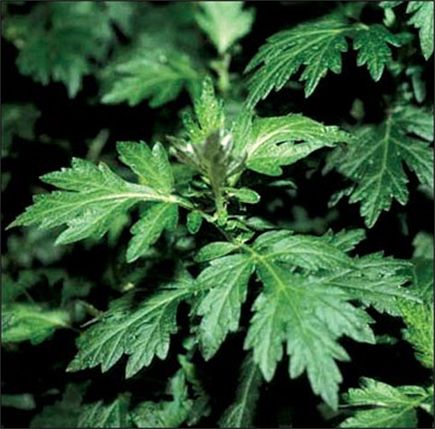
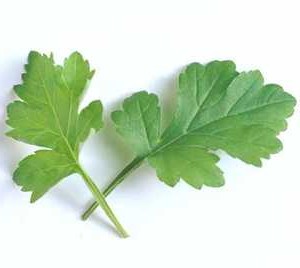
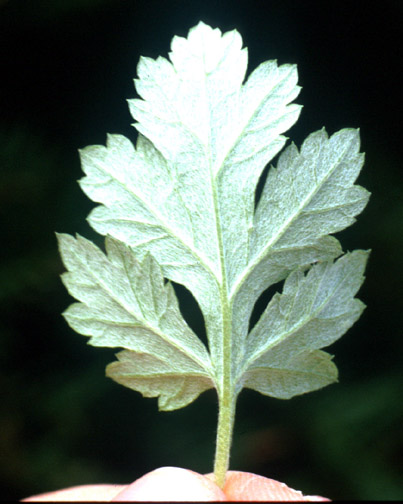
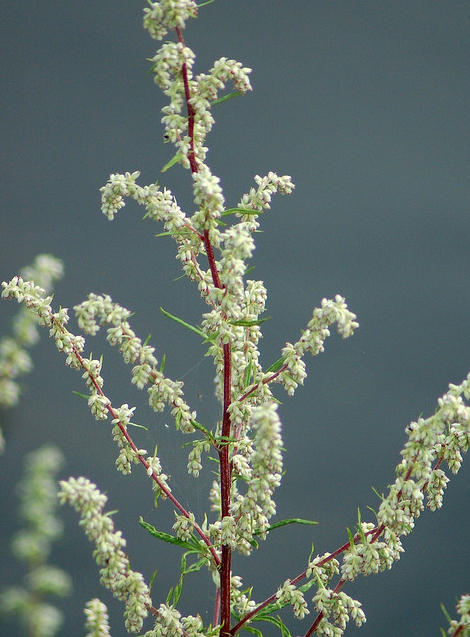
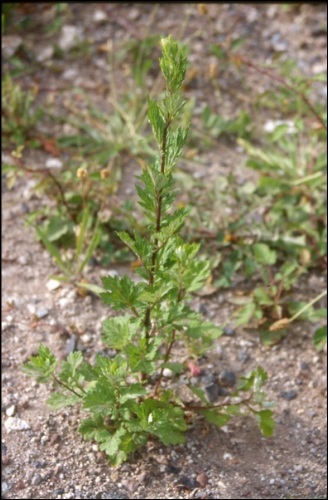

Great post. Enjoyed the in dept explanation. Merry Christmas (there are twelve days of them afterall ;))
Dear sir;
I am 64 years old and a lifelong forager and survivalist.
I am so glad to discover your videos,I’ve even learned a thing or two from you.
It is easy to see a labor of love and pure joy,learning more every day.
never to late to learn from nature,keep up this good work you do.
thank you so much
I think that is the identity of the plant at the edge of my garden intruding from the peony row. It seems to be shade tolerant and persistent. I had left it when I moved here and started the garden because I thought it was chrysanthemum.
Thanks
artemisia annua kills malaria. I have witnessed it. either synthsized artemisinin(100mg for adults, half for kids, quater for babies) or artemisia annua tea for 16 days will cure malaria with no known side effects. possibly giving imunity to malaria. the world health organization needs to allow studies, or at least do the studys themselves. all I know is it works! according to anemed, pregnantcy is a contrindication. WHO knows squat because they have not seriously looked into it!
Actually, artemisinins are already in use as the newest antimalarial drugs. besides, WHO doesn’t decide what drugs are to be reseaerched or used.
Love the posts, Deane. i’ve used mugwort to spice meat for several years, ands i also put it in my herbal tonic. (herbal schnapps)
Clarification, since common names for chemicals can be just as confusing as common names for plants: Coumarin is not the same as Coumadin/Warfarin – and Warfarin is just one of many 4-hydroxycoumarins sometimes referred to as either “coumarins” or “coumadins”. I don’t want to link to a whole bunch of explanations lest I get caught in a spam filter.
I’ve got gruit on the brain lately so now that I’ve found a patch of mugwort I’ll be making some beer with it 🙂
Yes, you are right but for my simple purposes, and so folks get without a lot of chemistry, the generic works.
I also use mugwort in my shoes. Either dried or fresh. It helps with those of us who have jobs that require standing on your feet all day. I have also made a mugwort tea for a sick stray cat who was clearly over taken by parasites. I poured the tea over the dried cat food. The cat started gaining weight and it became very healthy. I found her a home and she is very happy and healthy.
Hi Deane! Can mugwort be found in south Florida?
If it can I have not seen it yet. I did see some once in Jacksonville.
Another name ‘Travelers herb’ found along roadsides for that very purpose ‘put in shoes for energy and soothing the feet.I am impressed by all the uses mugwort gives us. Even helps to remember dreams(dream pillow)or drinking tea with sprig of Mugwort
Wow, we have loads of the plant in our horse fields. They grow beautiful. Now we know the benefits I will be cutting a lot tomorrow and drying.
Thank you Deane.
i found some in vietnam , i couldnt tell if it was vulgaris or absinthium, they are very difficult to tell apart unless they are in flower. i decided it must be vulgaris, i think absinthium is less common and grows in colder climates. i take a small leaf before sleep and it has a strong effect on my dreams . it makes them more vivid and improves my memory of them after i wake. if i take too much, 3 or 4 leafs , it disturbs my sleep. its powerful stuff i cant imagine eating it in any quantity. they use it as medicine here in vn, internally for the spine and bones . i guess that mean arthritis. it is used in traditional Chinese medicine in acupuncture moxibustion.
cheers
james
This plant took over a massive area of my grandmother’s yard. Deer won’t touch it… which is why it was able to take over so quickly, along with it’s rapid and aggressive rhizome production.
I tend to avoid using it, as it contains thujone (a liver toxin)… and I find it rather unpleasant tastewise anyway.
Thanks for a good, informative article, Deane! Out of curiosity, would Artemesia Annua possibly be usable as a spice for foods? I love the smell (I am the only one here who does, though.) and wondered. I reckon if it were used sparingly (like nutmeg, which is narcotic in high dosages or saffron which is quite toxic if overdosed), it might be at least neat to try. Dick Deurling method might need to be used here.
I don’t know but I will quote what Cornucopia II says on page 33: “Artesimsia annua, Sweet wormwood, Sweet Annie. In China, the plant is used as a medium for growing Aspergillus employed in brewing wine.”
Thanks for the reply, sir! I really need to break down and buy Mr. Facciola’s book one of these days. 🙂 If I do attempt anything, I will make sure to post the results in the forums.
P.S. We owe a lot to the Artemisia genus; Wormwood, Mugwort, Sweet Annie, Tarragon and Aromatic Sagebrush have all rendered service to humankind over the millennia.
Thank you in advance.
I am a beginner but strong believer in eat the weeds.
Can you help further my ID of mugwort. I can recognize the base leaves but to be correct the top portion of plant has more of a rosemary or a tarragon look to the leaves.
I had a patch that came up, and the smell of it was so wonderful. I suspected that it was mugwort, but I wasn’t sure. Now that I let it get a good bit bigger and I’ve gone outside with these wonderful pictures to identify, I feel like it’s common ragweed. The smell of it is so amazing though. I guess I’m just still confused. It truly looks more like the common Ragweed, stems green and everything, but it smells so incredible.
I am making a mugwort and wormwood tea to induce my monthly. I hope this works after five days. Any thoughts? Any advice?
Don’t forget the West Coast version, Artemisia douglasiana, California Mugwort
https://en.m.wikipedia.org/wiki/Artemisia_douglasiana